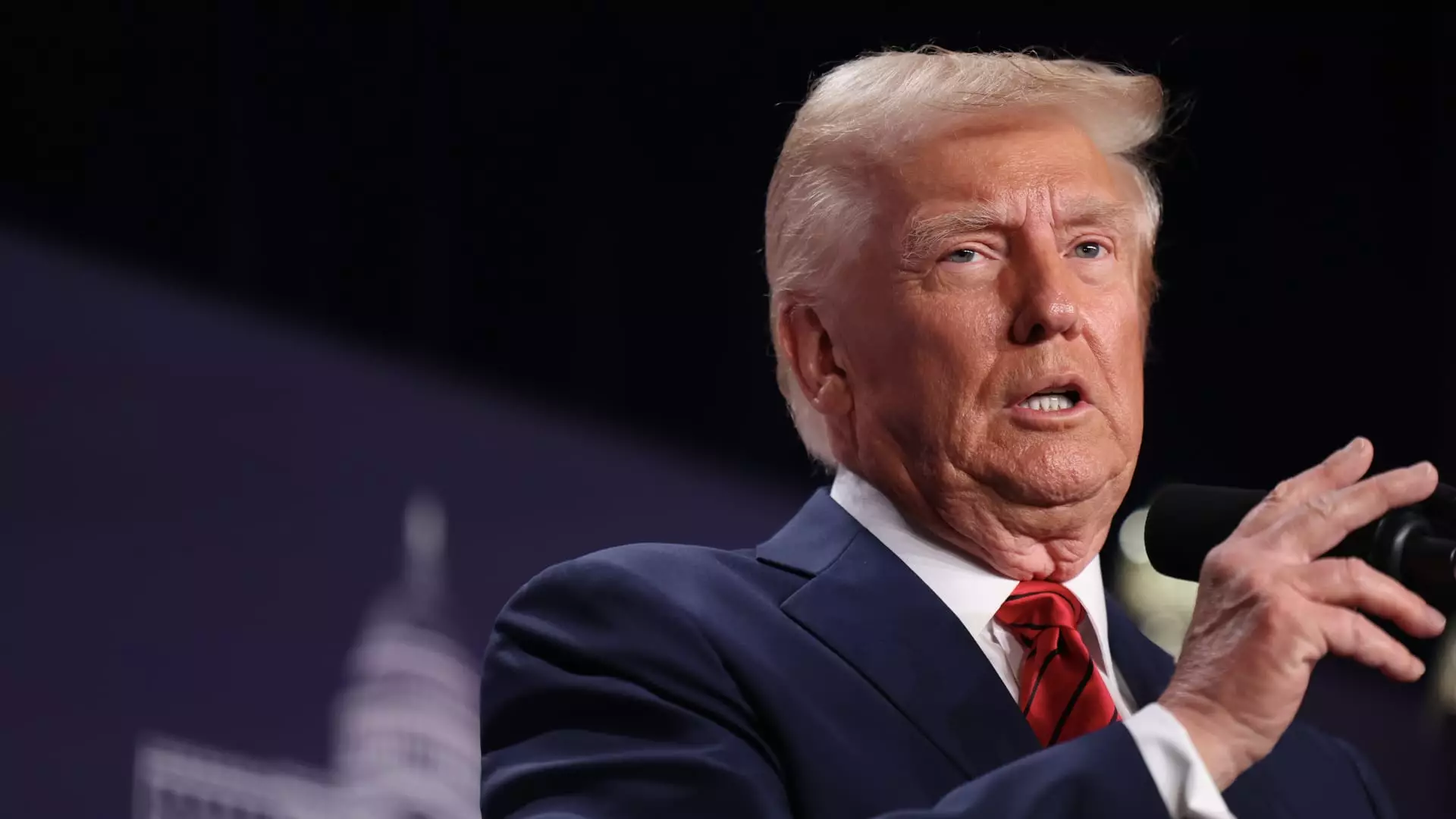Tariffs have emerged as a focal point of economic discourse, particularly during the Trump administration. President Donald Trump’s agenda concerning tariffs has stirred both support and skepticism. As he moves forward with plans to impose substantial tariffs on imports from Canada, Mexico, and China—set to take effect on February 1—economists warn that these decisions may carry a hefty price tag for American consumers. This analysis delves into the economic ramifications of these tariffs, exploring potential consequences not only for consumers but also for domestic industries and international relations.
At their core, tariffs function as a tax levied on imported goods. This can lead to increased costs for U.S. businesses that rely on foreign products, compelling them to pass along these expenses to consumers. Jennifer Lovely, a senior fellow at the Peterson Institute for International Economics, highlights the difficulty in finding any advantages to the imposition of such tariffs, which are seen largely as a burden to the consumer. Trump’s proposed 25% tariffs on goods from Mexico and Canada, alongside a 10% duty on Chinese imports, encapsulate the broader strategy of shielding American industry from foreign competition. However, the immediate effects are expected to manifest in the form of heightened prices for everyday items, as American households brace for the financial repercussions.
Forecasting Tariff Impacts on Consumers
The economic landscape of the U.S. is intricately linked with its trade relationships, with China, Mexico, and Canada representing its three largest trading partners. In 2022 alone, these nations accounted for over $1.4 trillion in goods imported by the U.S. Tariffs are anticipated to disrupt this balance significantly, risking inflation and limiting the variety of products available to consumers. The White House has suggested that exemptions may be considered—perhaps for select items like Canadian oil or certain foodstuffs from Mexico—but such nuances remain uncertain.
Mark Zandi, chief economist at Moody’s, notes that while exemptions may be used to cushion the impact on consumers, they do not negate the overall negative economic trajectory inherent in broad-based tariffs.
The potential revenue generated from tariffs is a factor often cited by proponents, with estimates suggesting a windfall of approximately $1.3 trillion by 2035. However, this figure must be weighed against forecasts predicting a contraction in the economy. For instance, a 10% tariff on Chinese goods could lead to a $55 billion decline in GDP. Ultimately, the anticipated economic benefits appear tenuous when considering such declines, particularly as industries that rely on imported materials face increased production costs.
Furthermore, the retaliatory capabilities of foreign nations present a significant wild card. It is crucial to consider that nations such as China are likely to respond to U.S. tariffs with their own tariff measures, potentially prompting an escalation into a full-blown trade war. Economists warn that such an outcome could adversely impact U.S. producers, who could experience diminished sales in international markets as a result.
One of the most contentious claims surrounding tariffs is their purported ability to create jobs within the U.S. economy. Analysts argue that this assertion is grossly overstated, with empirical evidence suggesting a far more complex relationship. For every job created in the steel industry, for example, it is reported that 80 jobs in industries that utilize steel as an input could be lost. As research has shown, the collateral damage inflicted on job markets due to tariffs is substantial, raising questions about their effectiveness as a tool for job creation.
Moreover, indirect effects could emerge as U.S. producers, facing reduced foreign competition, may increase their prices. This cascading effect could lead to higher costs across various sectors, notably in transportation and food, where Canada and Mexico are key suppliers. The potential hike in food prices, coupled with an increase in the cost of transportation and machinery, raises red flags for consumer purchasing power and overall economic stability.
The imposition of tariffs by the Trump administration marks a critical juncture in U.S. trade policy—one that demands careful reassessment. While the intended goal is to bolster domestic industries, the economic reality suggests that consumers are likely to bear the brunt of the fallout, facing increased prices and reduced choices. Additionally, the potential for retaliatory measures from trading partners presents further challenges that could hinder U.S. industry growth.
As debates continue over the long-term viability of tariffs as an economic strategy, economic evidence underscores a prevailing concern: the costs may far outweigh the benefits. Moving forward, policymakers must weigh the immediate advantages of tariff implementation against the broader economic disruptions they may unleash, fostering a more nuanced approach to trade relations that prioritizes sustainability and consumer well-being.

